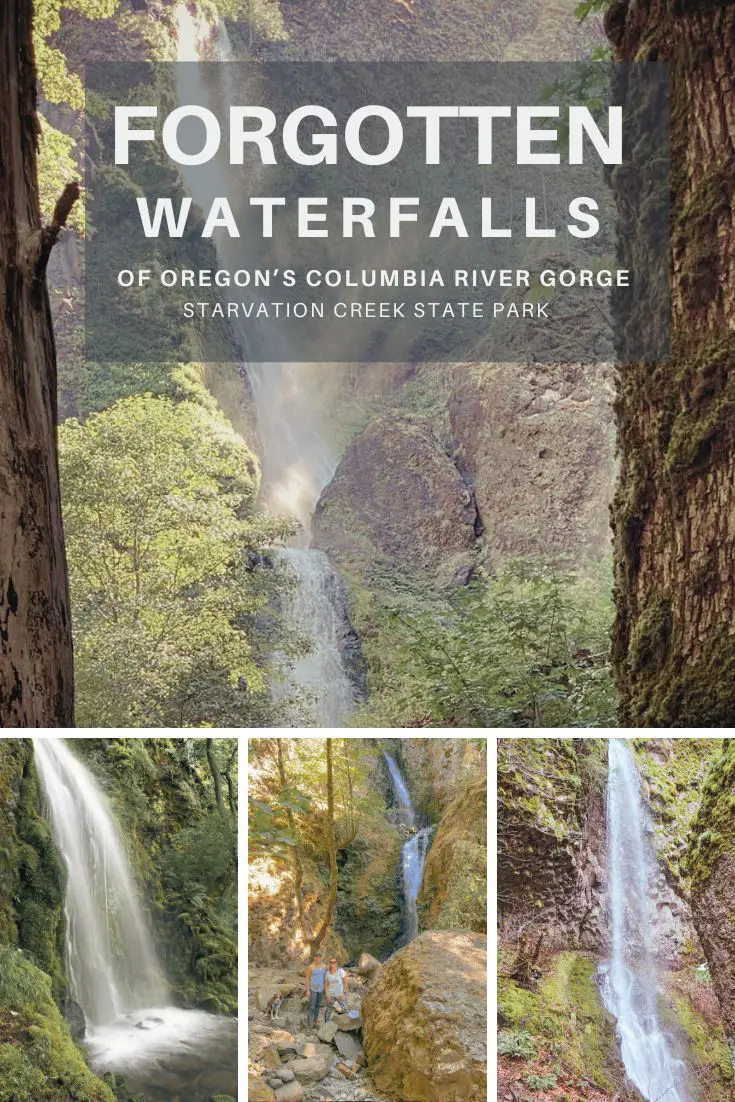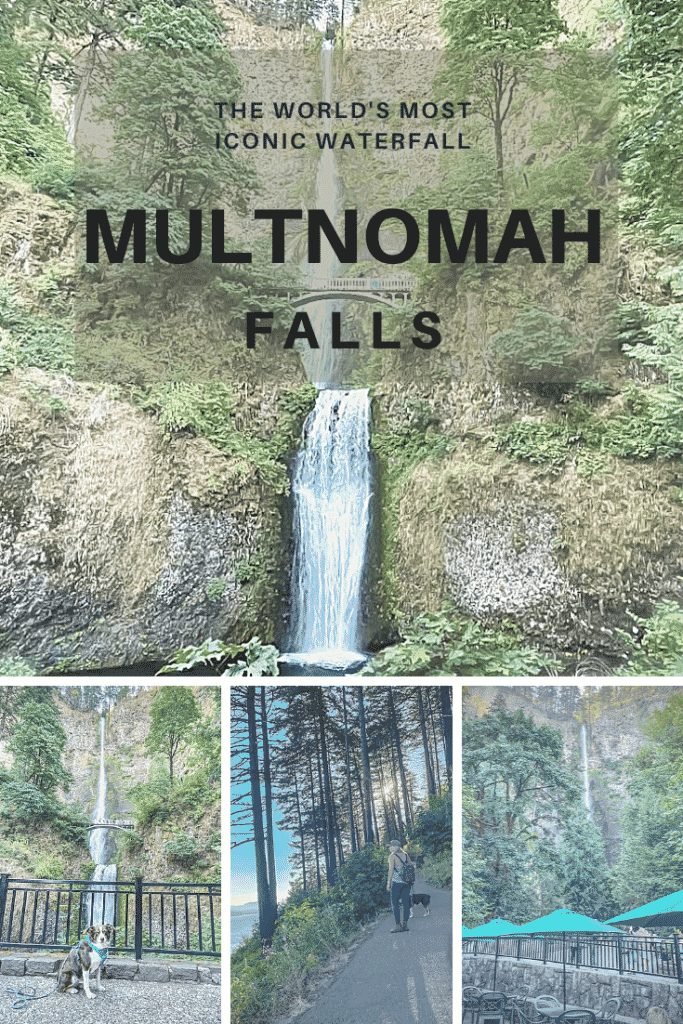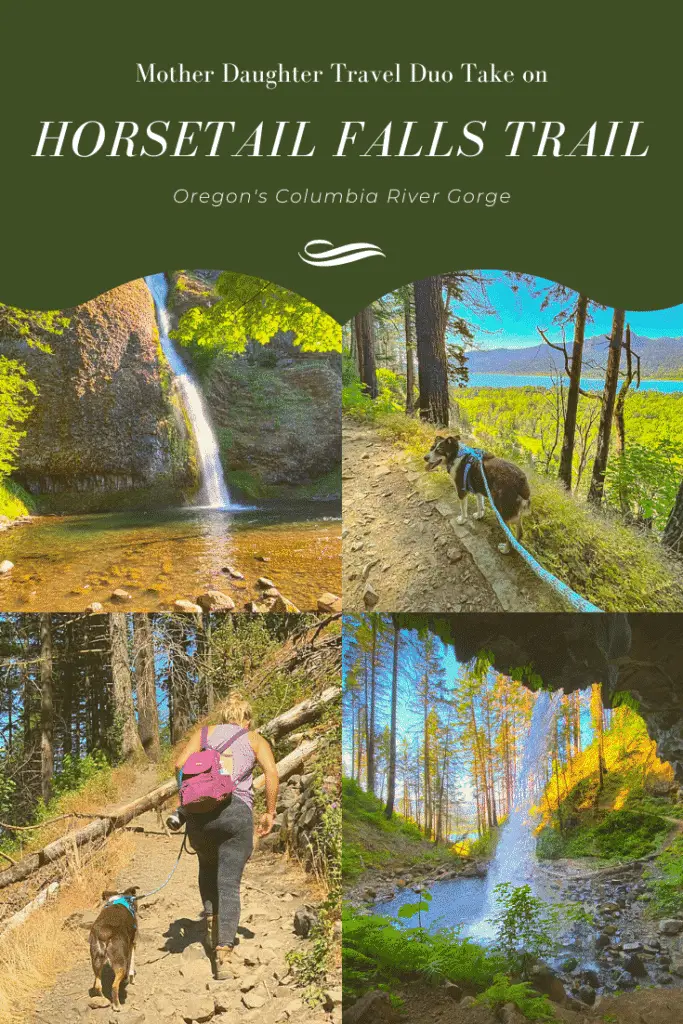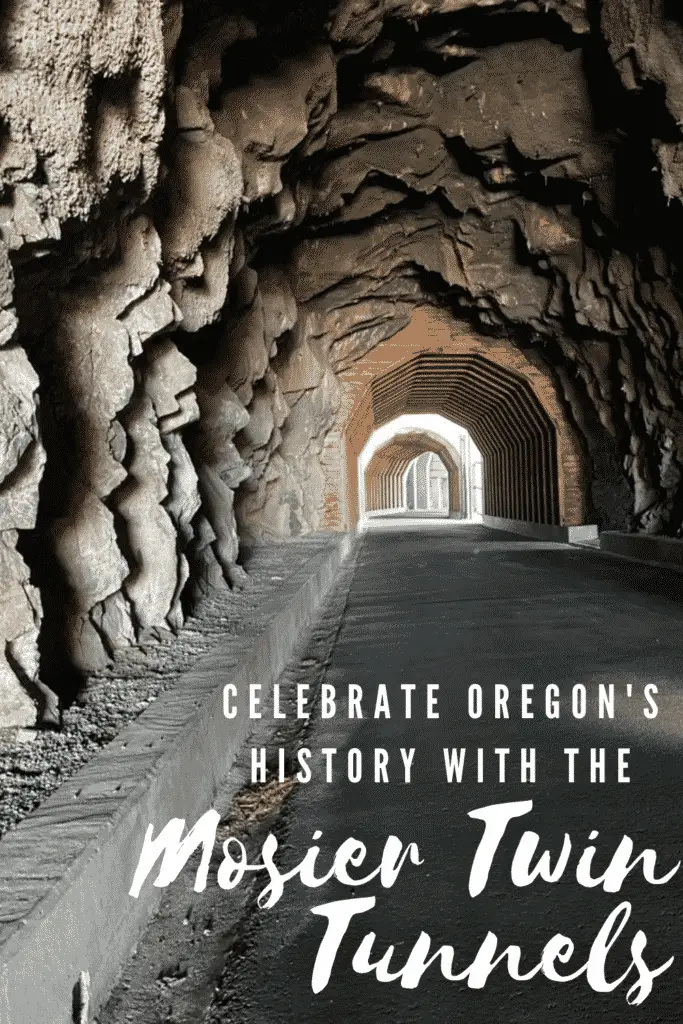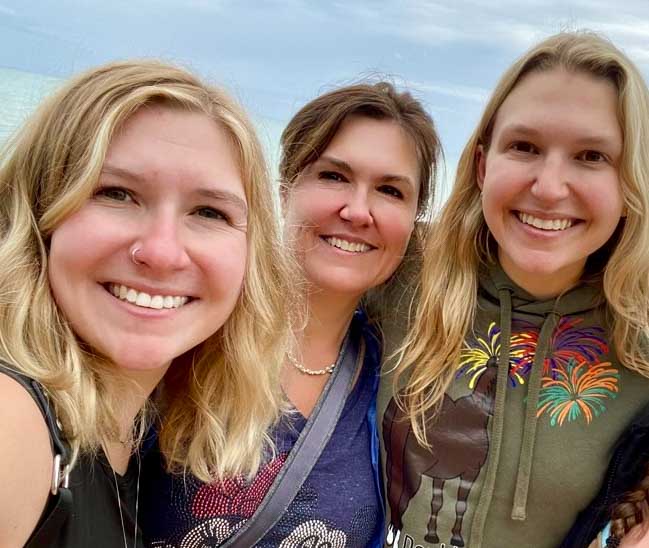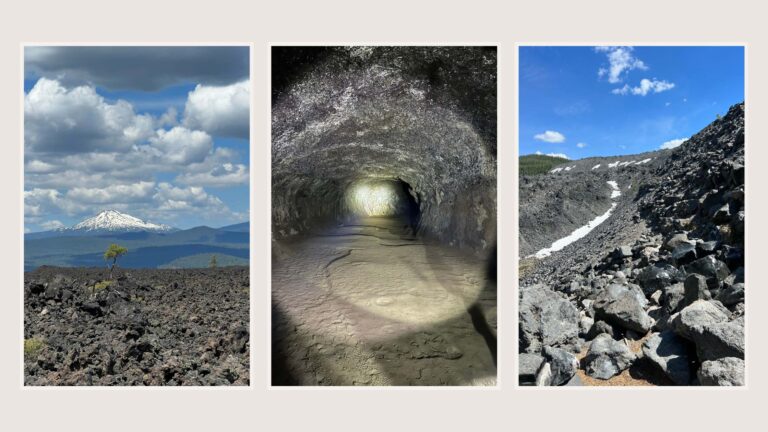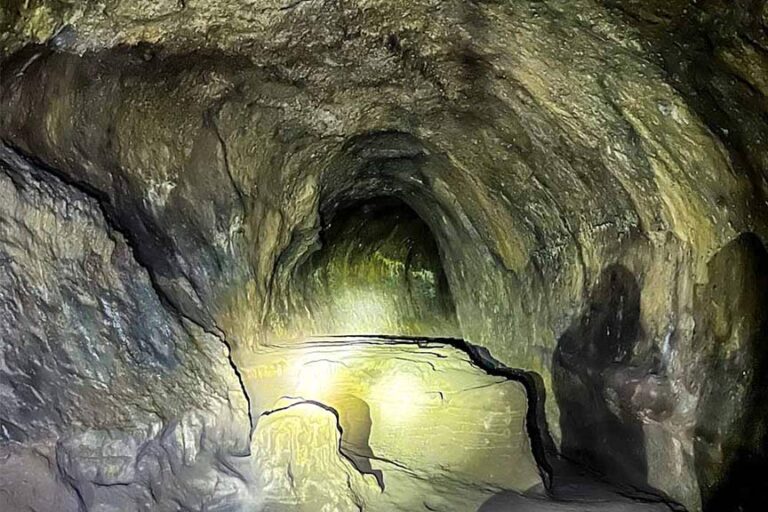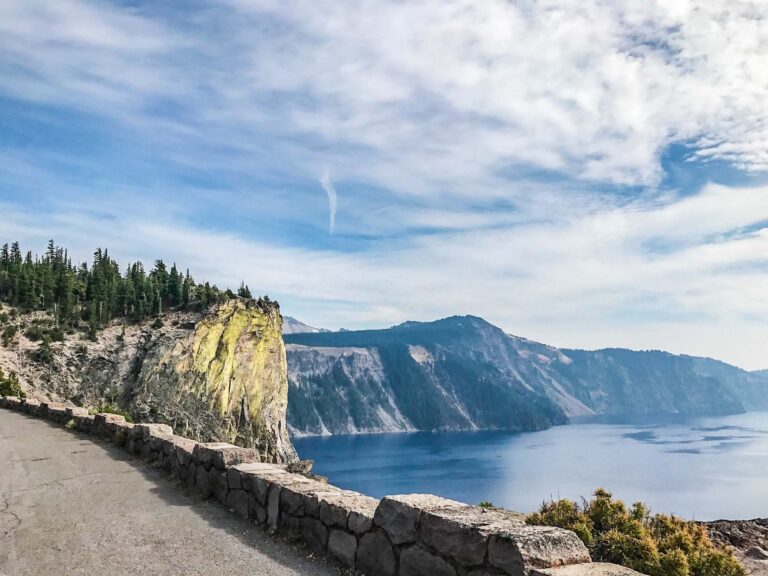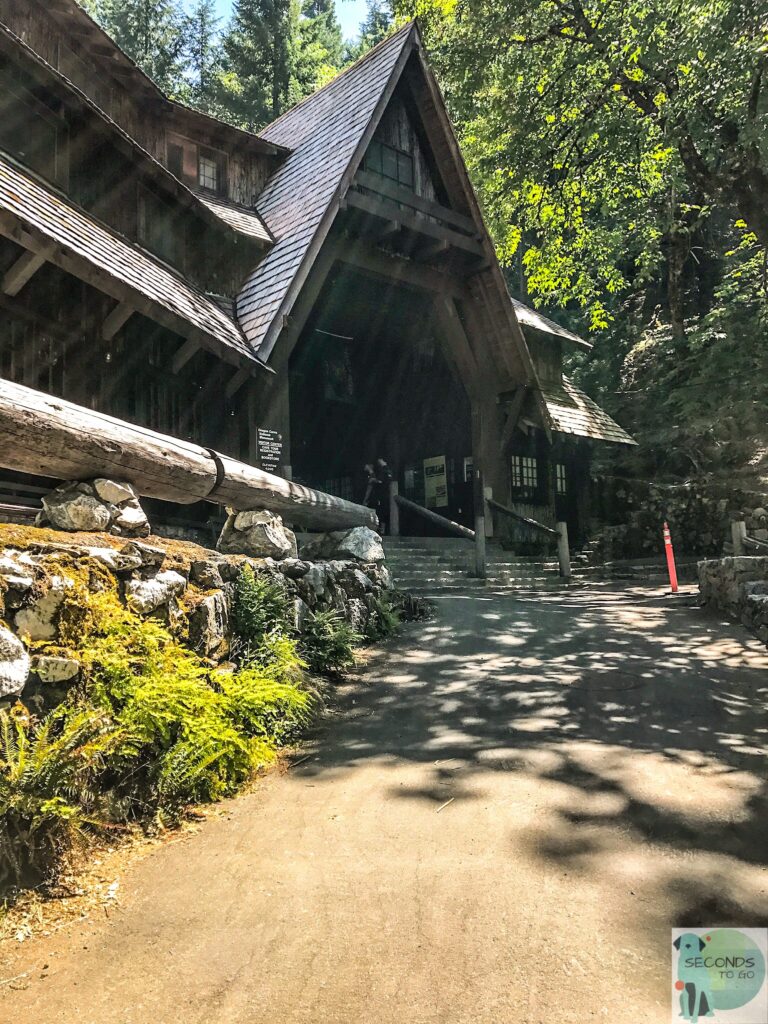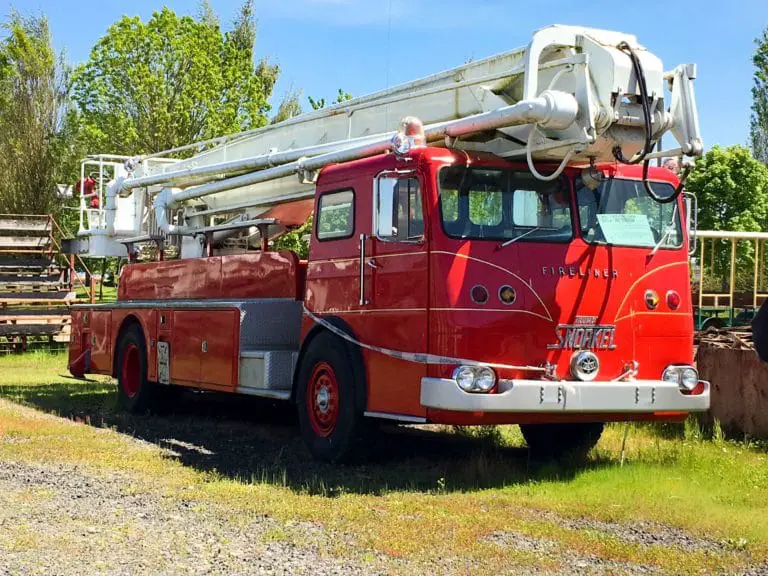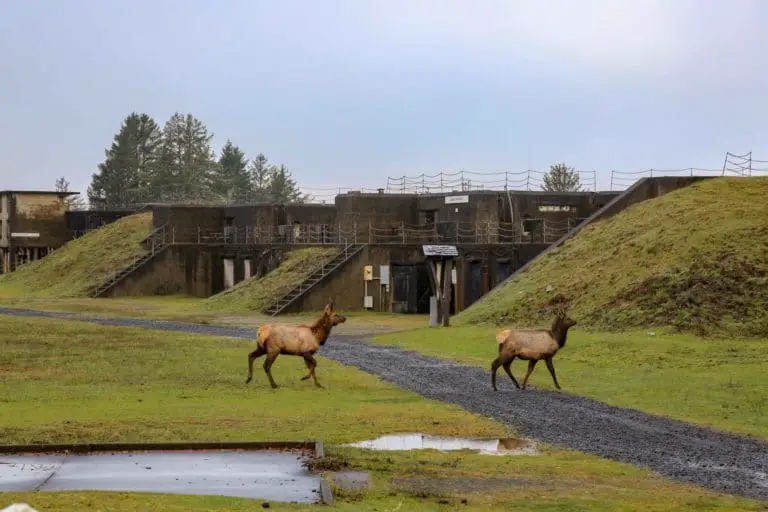Starvation Creek, an Oregon state park located along the Columbia River Gorge, serves as a jumping off point for accessing the paved old highway 30, that is now an Oregon hiking trail for pedestrians. This trailhead also serves as easy access for four different and unique waterfalls, that are all a short walk from the trailhead.
Starvation Creek Oregon History
Highway 30 was the first highway to stretch along the Columbia River Gorge, connecting Portland to points west as far as The Dalles. It opened new travel destinations for those living along the highway and gave access to diverse natural areas that had barely been seen before.
Highway 30 wound its way through cliffs, hills, and trees, loosely following the river’s path. But, it was far from efficient. The highway was narrow and windy, making travel slow. It also made larger vehicle travel near impossible.
Soon, Highway 84 was built, mimicking the course of the river exactly and removing many of the twists, turns, and ascents and descents. The new highway had more and wider lanes, facilitating more truck traffic as overland transport of goods became more common.
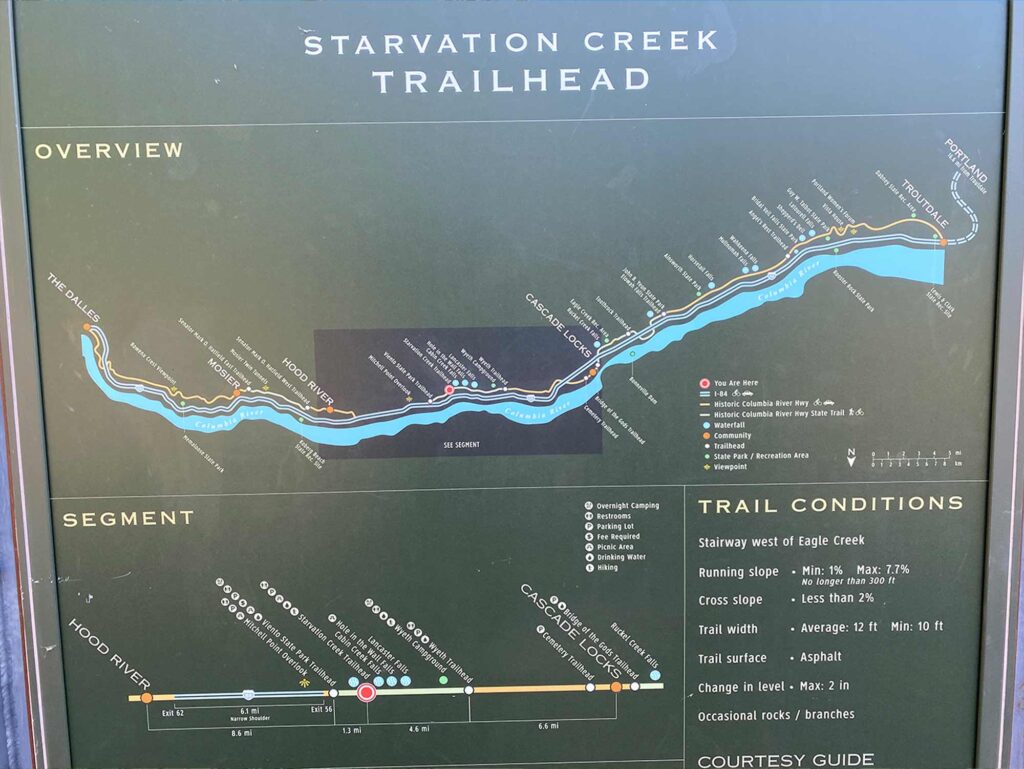
This left Highway 30 abandoned, with many stretches falling into disrepair. In more recent years, these old stretches of the highway have been restored and turned into walking and biking paths for outdoor enthusiasts. For the first time in decades, many forgotten waterfalls, and other natural sights are once again accessible for the public to enjoy.
This is how the Starvation Creek State Park and the Starvation Creek Trail came to be. Four Starvation Creek waterfalls – Starvation Falls, Cabin Creek Falls, Hole-in-the-Wall Falls, and Lancaster Falls – are now as easily accessed by the public, as they were during the historic highway days.
What You’ll Find at Starvation Creek State Park Today
Starvation Creek State Park first and foremost, gives access to the Starvation Creek Waterfalls. Starvation Creek Falls is the most easily accessible by following a short trail from the parking lot.
The Starvation Creek Waterfall was named for an unfortunate incident. In December 1884, a train became stuck near the falls due to an immense snow load.
Passengers were stranded for three weeks, and almost starved. Luckily, residents of the Columbia River Gorge skied back and forth from the train delivering supplies as they could, preventing any deaths.
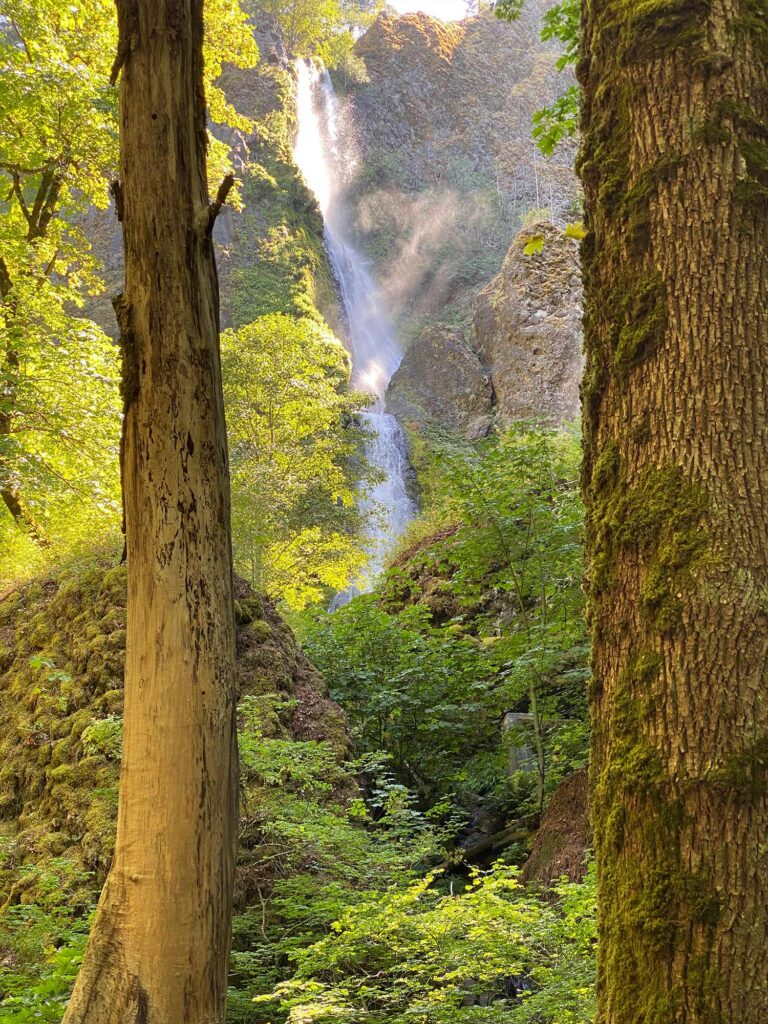
Today, accessing the Starvation Creek Trail is simple. Just take exit 55 off of Interstate 84 and follow signs to Starvation Creek State Park. Pull into the parking lot and head to the left, behind the bathrooms. This will take you east on the Historic Columbia River Highway. Not even a tenth of a mile from the trailhead, Starvation Creek Falls will be on your right.
Be aware that there is a shaded loop walking path below the restrooms. This path will not take you to the falls. To access the falls, follow the path leading up and away from the restrooms.
At the falls, enjoy the views, take photos, or even bring a lunch to eat at one of the many picnic tables at the base.

Heading Out on the Starvation Creek Trail
Once you’ve sufficiently explored Starvation Creek Falls, its time to explore the rest of Starvation Creek State Park. Following old Highway 30 east, back track first to the parking lot, then continue west or to the left.
From this point, you can access three more Starvation Creek waterfalls on the Starvation Creek Trail. First up, will be Cabin Creek Falls. The trail will lead through the parking lot and follow along Highway 84 for a bit. Soon, you will enter the trees, and the road noise will lessen.
Once you are inside the trees, keep an eye out to the left for a small brown sign that points out Cabin Creek Falls. This will be about 3/10 of a mile from the parking lot. The falls are a very short distance off the trail, so they are easy to spot. However, the flow might be light if you’re visiting during summer months.
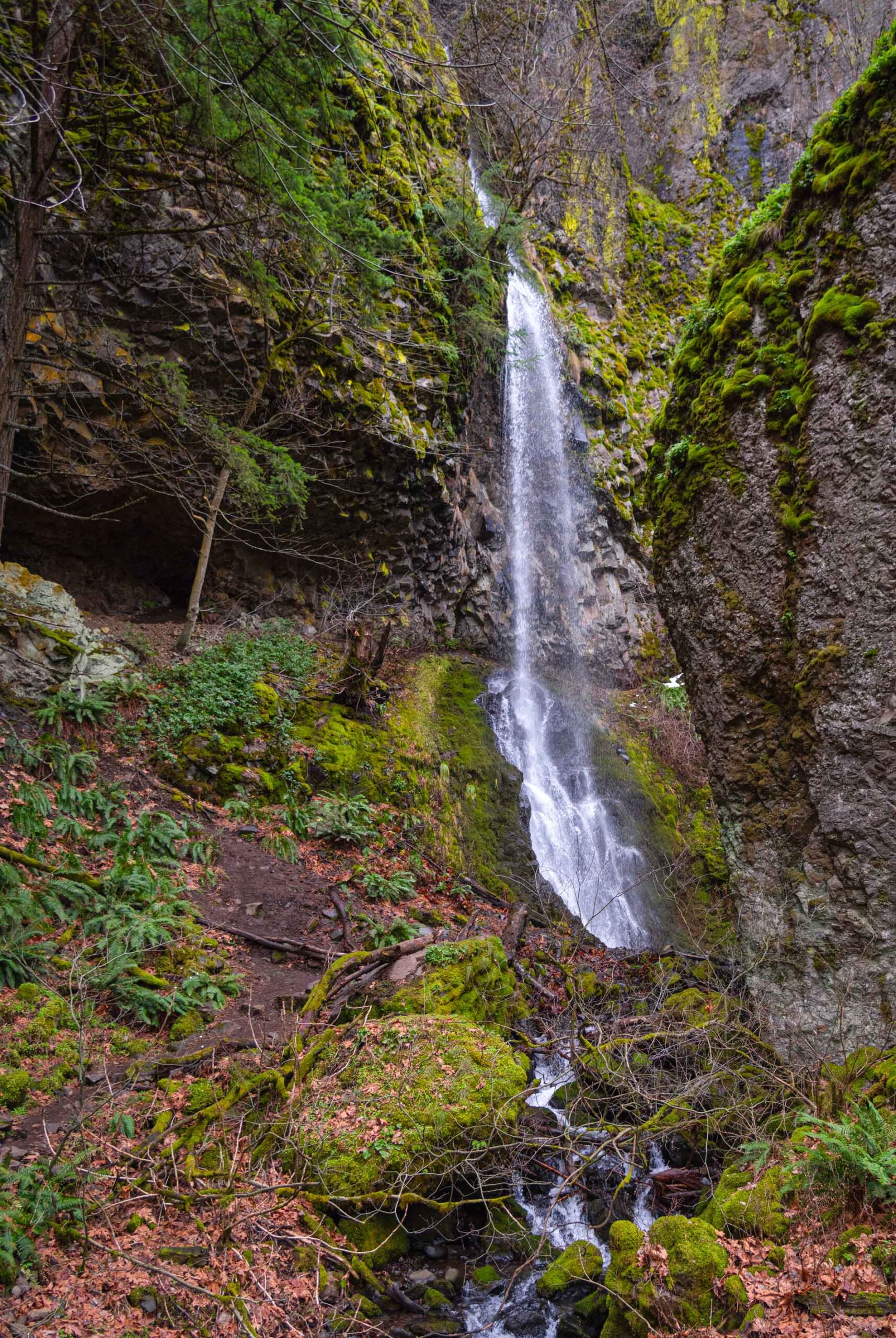
Cabin Creek Falls contains one of the most unique natural elements inside the Starvation Creek State Park. If you opt to walk closer, you will notice the bottom of the falls bouncing around a large boulder. This large boulder fell at some point in time to create a natural amphitheater. Inside, the noise of the falls is the only thing you can hear, even if you might get a bit wet doing it.
Next up, is Hole-in-the-Wall Falls. This Falls is set 7/10 of a mile from the Starvation Creek State Park parking lot.
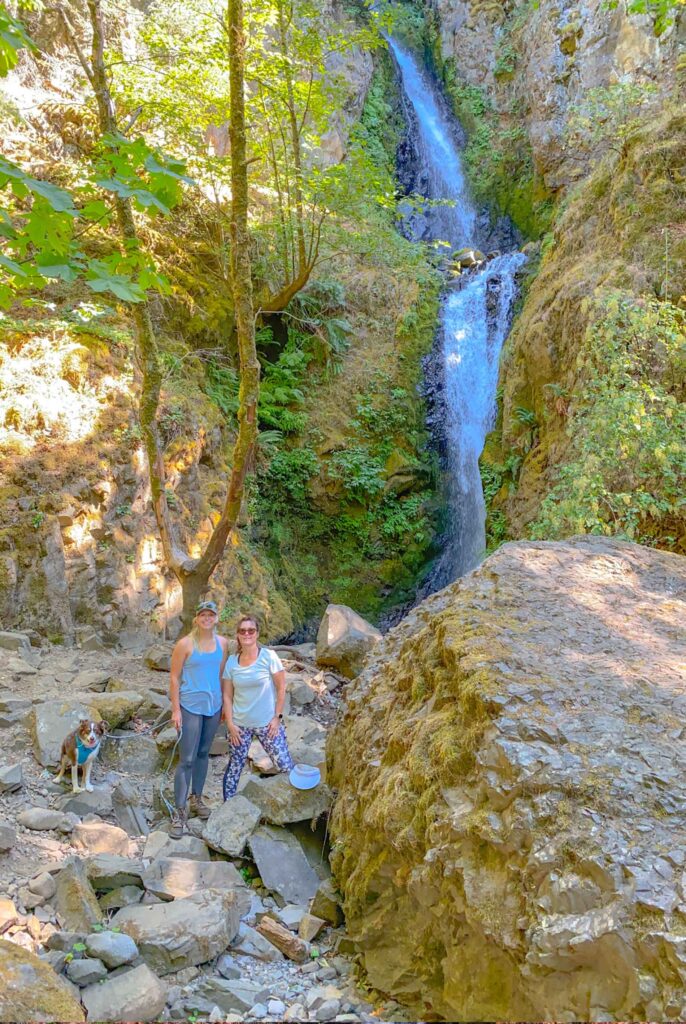
6/10 of a mile from the parking lot, the trail will split in two, this is the first fork you will encounter. You will want to head to the left, then continue onward. This trail will lead directly to the falls on your left.
Hole-in-the-Wall Falls is a manmade waterfall. In the early days of the old Columbia River Highway, Warren Creek was causing erosion issues. Road crews performed the laborious task of rerouting the water and drilling a tunnel through tough rock.
Today, the water seems to come directly out of the stone and fall to the ground, creating the waterfall.
If you continue on over the bridge and walk for 2/10 of a mile, you will find Lancaster Falls off to your left. This section of trail does have a modest incline and is the only part of the hike so far where you will encounter much of a variation in terrain.
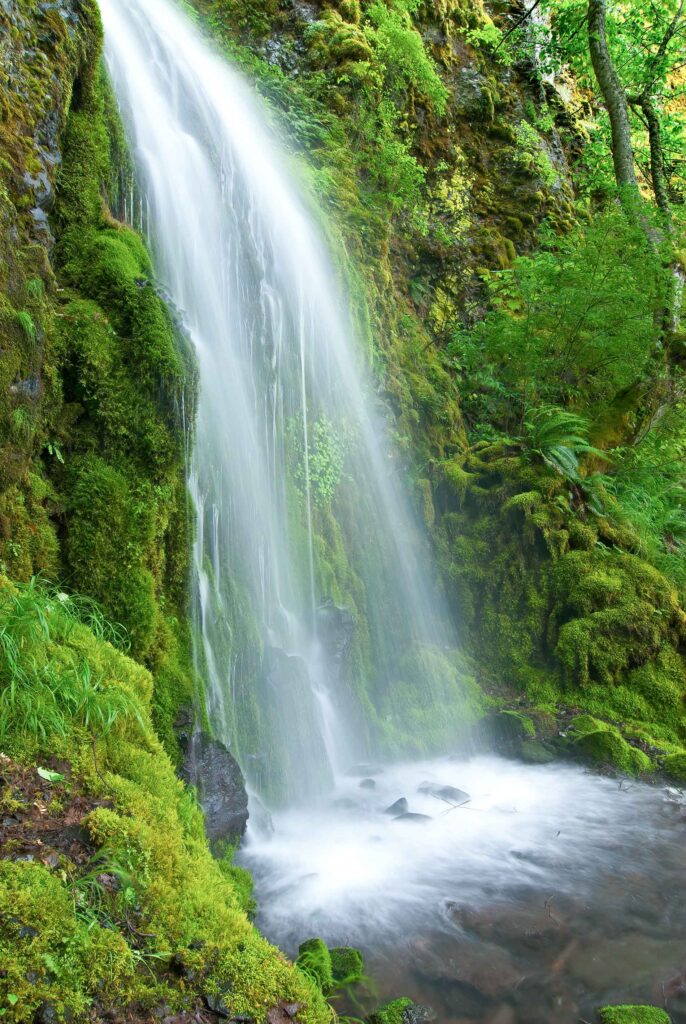
After visiting the four Starvation Creek State Park waterfalls, you can return back to the parking lot, or keep the adventure going on many of the trails that criss-cross this area.
Hiking from Starvation Creek State Park
For more or longer adventures inside the Starvation Creek State Park, you can always hike more sections of the old highway 30. For example, rather than turning left to go to Hole-in-the-Wall falls, continue straight.
This will lead to the Warren Creek Bridge, which mimics the style of the old bridges on the original highway. Continuing this way will also lead to great views of Dog Mountain, Lindsey Creek, Camp Benson Falls, Lindsey Creek Falls, and Lindsey Creek State Park.
In this direction, 4.6 miles from the Starvation Creek State Park parking lot, you can even access Wyeth Campground.
Heading east from Starvation Creek Falls, hike one mile along the old Highway 30 to end at Viento State Park.

